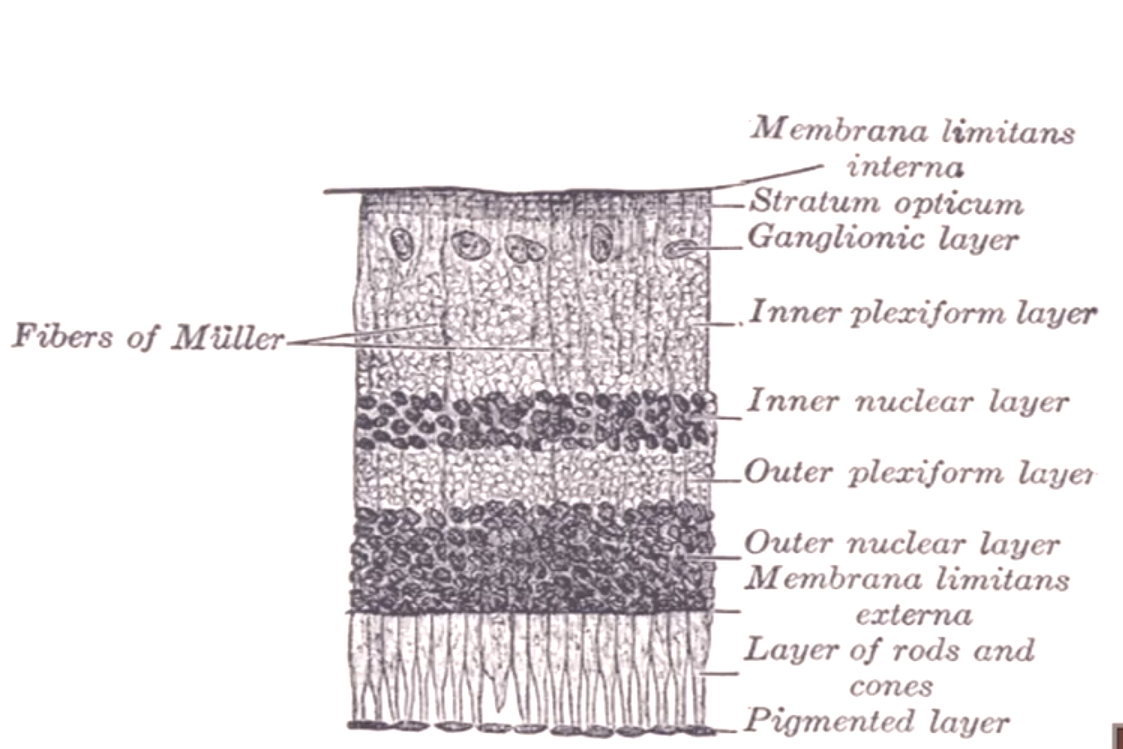
Light’s Journey and Phototransduction
- Light enters the eye and focuses on the retina, located at the back of the eye.
- Light first passes through a layer of retinal ganglion cells (their function will be explained later).
- It then travels through several more cell layers before reaching the photoreceptors.
- Photoreceptors are specialized cells that convert light energy into electrical signals. They consist of a cell body and an outer segment.
- Light must hit the outer segment of the photoreceptor for phototransduction to occur.
Phototransduction: Converting Light to Electricity
- Rhodopsin, a molecule within the outer segment, absorbs photons (light particles).
- Upon absorbing a photon, rhodopsin changes its shape, triggering a change in the electrical potential of the cell membrane. This is phototransduction.
- Vitamin A is a crucial component of rhodopsin, explaining why vitamin A deficiency can impair vision.
The Importance of the Retinal Pigment Epithelium (RPE)
- It might seem illogical for light to travel through several cell layers before reaching the photoreceptors.
- However, the photoreceptor outer segments, where rhodopsin resides, require a partnership with the retinal pigment epithelium (RPE) located at the back of the retina.
- The RPE, a layer of non-neural cells, plays a vital role:
- It renews rhodopsin, a process essential for photoreceptor function.
- It nourishes and supports the photoreceptors.
- Disruption of the connection between photoreceptors and RPE, such as retinal detachment, can significantly impair vision.
Key Takeaways
- Photoreceptors and the RPE work together in a crucial partnership for vision.
- Any disruption of this partnership can be detrimental to vision and requires treatment.
- A healthy RPE and well-functioning photoreceptors are essential for good vision.